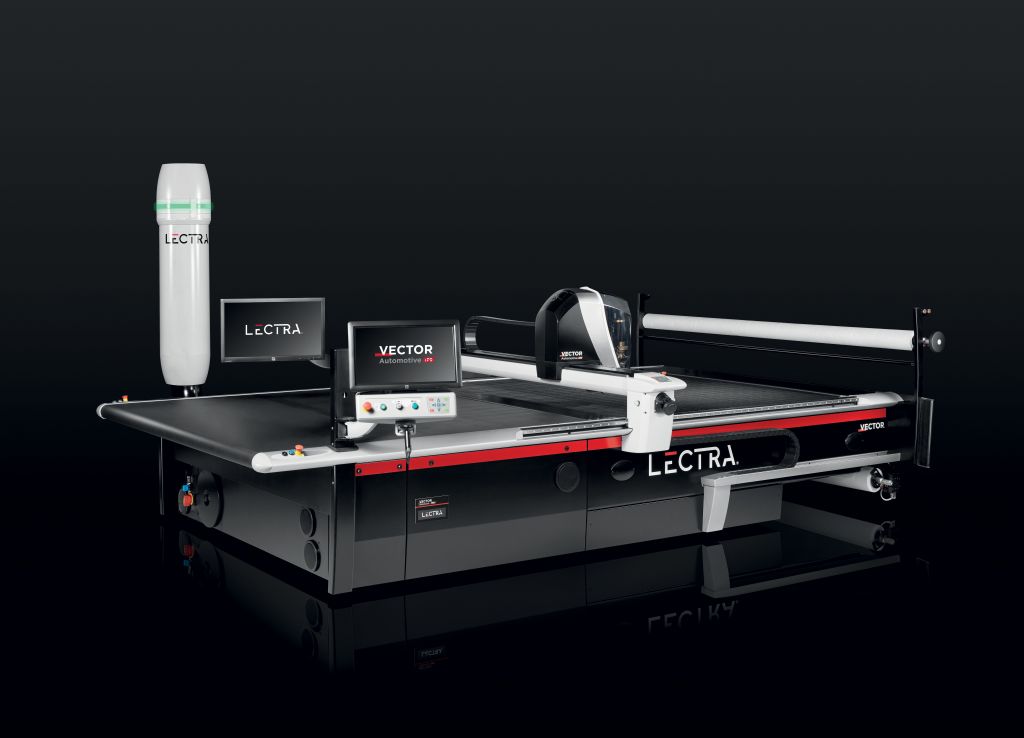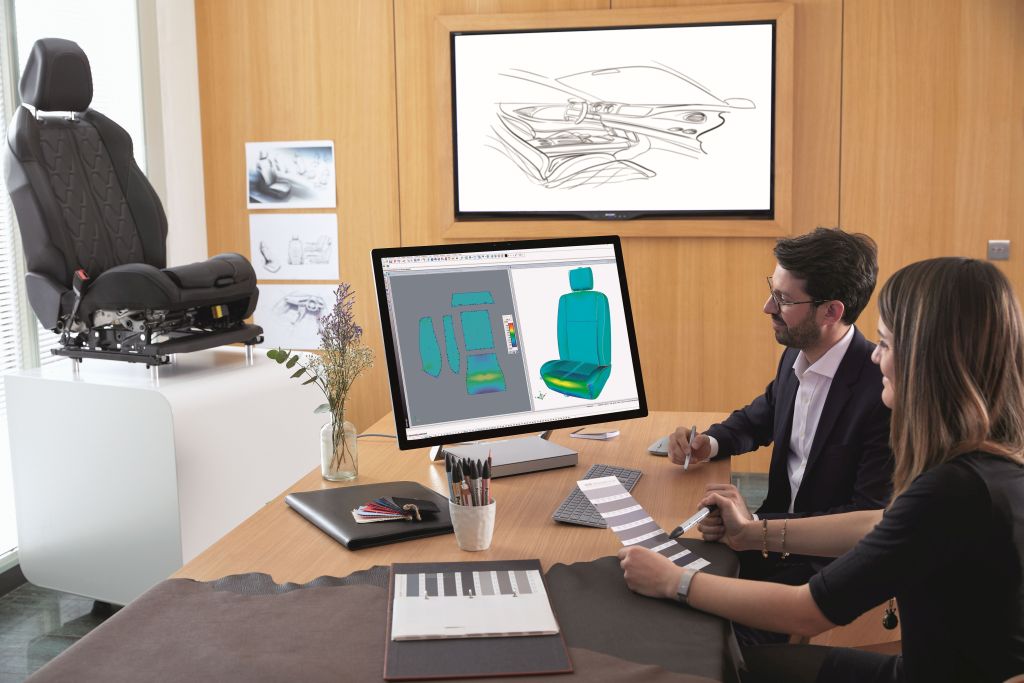Going green in the automotive cutting room

Software and cutting machine tool systems specialist, Lectra looks at the six best cutting room practices to improve environmental sustainability and productivity and how production engineers can make a difference.
One of the reasons why automotive manufacturers have been slow in implementing eco-friendly measures is its cost. There has been a preconceived notion that sustainability is expensive, and it’s an initiative that can only be undertaken by large, international companies with impressive budgets.
Here’s where manufacturing engineers can play a major role. They have the power to reverse that assumption and help their companies become more sustainable, as they have real insight into their daily production processes.
Responsible for equipment implementation and maintenance, they work closely with operators. They can show that by investing in the right cutting equipment, analysing the right data and focusing on achieving a select few objectives, improving sustainability can lead to an increase in cost and material savings, and reduce their total cost of ownership too.
Here are six ways how you can improve environmental sustainability and productivity in the cutting room:
1) Cut with zero buffer to minimise fabric waste
You need best-in-class equipment that cuts with zero buffer. Well-designed blades and built-in smart maintenance, and management systems and sensors can facilitate zero-buffer cutting and minimise fabric waste. Look out for features such as stress sensors for more precise line adjustment, new conveyors to eliminate small inaccuracies, embedded cameras in the cutting head, adjustable cutting parameters and speed, fine and rigid connected blades that don’t bend while cutting, and pilot software that can detect and adjust common lines. They make zero-buffer cutting possible.

Why is this important? In the cutting room, things add up. The more material you save, the less money and energy you need to spend on fabric and waste management. Reducing your buffer by a mere 1mm will improve your fabric yield by 1%. If you currently have a fabric yield of 77% with 3mm-buffer cutting, with zero buffer, it will drastically increase by 80%. As a result, your waste will decrease from 23% to 20% in terms of total material surface, which diminishes your overall waste by 15%. Additionally, with less fabric waste to manage, you will incur less internal logistic, storage, labour and supplier costs. The cheapest way to minimise waste is by preventing it.
2) Reduce errors, scrap rate, and rework
Errors are costly in terms of fabric waste, time and money. Unrecycled fabric scraps usually end up in landfills. A high scrap rate is usually caused by four main factors: low quality raw materials, equipment, poor operating practices, and cumbersome production setup processes. Firstly, it is important to provide your cutting room personnel with easy-to-use machinery that has high-quality blades to increase precision especially when it comes to high-ply cutting. The thinner and stronger your blade is, the more accurate the cutting gets. For example, a 1.5 x 6.5mm blade will guarantee clean, cutting quality free of defects even for high plies of fabric.

Knowledge-sharing has been cited as a problem between generations of manufacturing engineers and within their teams of operators that could contribute to a high scrap rate. Improving the training process via quick wins and a step-by-step method will help your operators gain confidence and ample knowledge to use the machines with ease. Having a system to store data on your last cutting jobs can help you transfer knowledge to new staff. Everyone has a role to play. Examining your past failed products together as a team is necessary to improve your current processes. Having a connected dashboard or a platform can help all team members access centralised data and analyse past cutter performances, establish KPIs to identify and eliminate roadblocks.
Avoid errors caused by equipment breakdown and dysfunction by increasing machine availability. Ensure that your cutting machines come with extended hours of remote technical support, built-in preventive and predictive maintenance systems, and undertake regular cycles of check-ups and preventive maintenance.
3) Discard fewer consumables and spare parts
The longer your consumables and spare parts last, the less wasteful it is to produce vehicle interiors. It’s important to invest in consumables and spare parts that are made out of sturdy and biodegradable material. For example, a 30-hour gain in maintenance (by changing your consumables every 1,000 hours instead of 500) can lead to 7% increase in cost savings. By changing your spare parts within longer time frames, there will be less machine stoppage and disruption, and hence, fewer errors and failed products made. A 100% increase in the lifespan of a blade and its sharpening bands, and 40% increase in a bristle block’s lifespan can lead to an 8.5-hour gain in productivity.
4) Lower your power consumption
The vehicle production process requires large amounts of water, energy and resources, so every bit of effort in improving sustainability counts. In the fabric cutting room, you can use low power consumption technology that is energy-efficient for your processes. The fabric cutting solutions you use should also comply with global safety and environmental regulations, ensuring that you meet industry standards. Installing automatic energy-saving consumables, permanent bristle block cleaners and an auto-restart function for power failures help minimise electricity usage.
5) Increase labour and productive efficiency by gaining visibility into your processes
Sustainability is all about using the same number of resources more efficiently and leaving nothing to waste. Increasing efficiency of your processes is a way of improving it, and this entails having detailed, actionable insights into what each cutting room team member is doing, identifying and clearing roadblocks and non-value-added tasks. In this case, having a digital dashboard can be particularly useful.
By owning a centralised platform that is connected to your cutters where you can store, receive and share all data from different cutting sites and processes, you can gain visibility into all your cutting processes, set your KPIs, and identify areas of improvement.
Use your dashboard to keep track of machine time breakdown, net cutting time, production performances, machine use, production quantities to get the full picture of which resources you have not been optimising enough to continuously improve your processes and eliminate waste.
6) Adhere to ISO 14001 standards
In order to obtain the 14001 certification, automotive companies have to continuously track and reduce their energy consumption, greenhouse gas emissions, and establish objectives for waste reduction and a waste management priority system that includes ‘prevention, reduction, reuse, recovery, recycling, removal and finally, disposal’. Vehicle interior manufacturers can help their customers contribute to this global effort by using automated cutting equipment that enables them to meet these targets. They can thereby set a precedent for their customers, competitors and suppliers, and eventually the entire automotive industry.
Embracing sustainability in your everyday operations is in a way, investing in the future. By implementing these six best practices with the help of Industry 4.0-compliant cutting equipment, production engineers will be able to help their companies become more eco-friendly, and most importantly, ready for the future.








